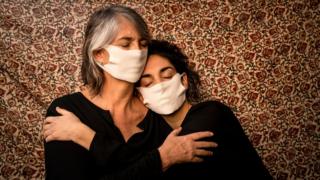 Image copyright Tamara Merino/Covid Latam
Image copyright Tamara Merino/Covid LatamClowns, culture and the coronavirus pandemic are some of the themes of the Bronx Documentary Center’s third Annual Latin American Foto Festival, which features award-winning photographers from the Caribbean and Latin America.
Relocated outdoors due to the pandemic, this year’s festival will feature large-scale photographs displayed throughout New York’s Melrose community.
Works by artists from Colombia, Brazil, Puerto Rico, Mexico, Venezuela, Chile and Argentina will be displayed with photos from a variety of projects focusing on social issues.
Here is a selection of some of this year’s featured photographers alongside their comments on their projects.
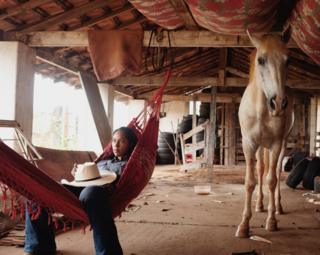 Image copyright Luisa Dörr
Image copyright Luisa DörrLuisa Dörr
“Historically, as in other countries, women have been largely excluded from Brazil’s cowboy culture.
“But in recent years, women are on a winning streak, whether as rodeo pageant beauty queens, horse riding champions or platinum-selling country music stars.
“The current political climate has made this work a necessity for me.
“It is a portrait of the juxtaposition of modern Brazil, of the transition from historic to pop culture. Ultimately, it is a world that few people know.”

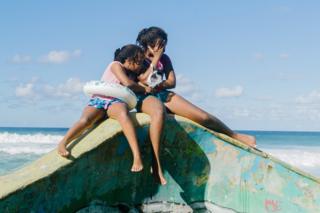 Image copyright Adriana Parrilla
Image copyright Adriana ParrillaAdriana Parrilla
“All my life I’ve been called ‘trigueña’, which is a euphemistic word used in Puerto Rico to describe someone who is black or mixed race.
“It is a word that confused me because it was always employed to make me feel good about my skin colour.
“Growing up, I knew that I was not white – I was constantly reminded of it.
“But, I was always trying to figure out if I was black enough.
“This is the first part of a long term ongoing project exploring black identity in Puerto Rico.”

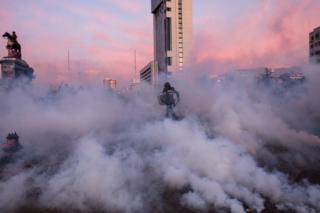 Image copyright Eric Allende Gonzalez
Image copyright Eric Allende GonzalezEric Allende Gonzalez
“In October 2019, massive failures in public transportation triggered a wave of uprisings against the 30 years under a neoliberal system that prioritises economic power over social character in Chile.
“The first to rise were high-school students, who made the calls through social networks, and quickly people of all ages and different social strata joined.
“Thousands of people walked the streets and burned trains.
“Chile had woken up. I had to contribute with what I know how to do: take photos.
“I felt the need to show what was happening in the country and what the mass media was hiding.”

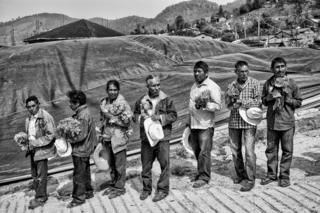 Image copyright César Rodríguez
Image copyright César RodríguezCésar Rodríguez
“In the state of Guerrero, Mexico, there is a region called La Montaña, which is one of the many places in Mexico which the government seems to have forgotten.
“For decades the indigenous people of La Montaña have been producing opium paste to survive.
“This paste was the main income for many of the towns in the region until the price dropped a year-and-a-half ago.
“Now, many local producers and farmers have lost their income.
“Many of the celebrations and traditions, both Catholic and pre-Hispanic, were done with income from the opium trade.
“Now, with no production and no money, many of the traditions are not being celebrated.
“Poverty is growing and in addition, public security has deteriorated, forcing locals in many towns to rise up against the drug cartels.”

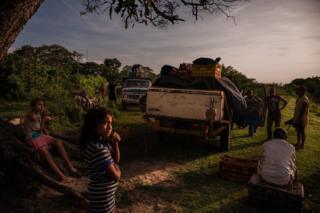 Image copyright Adriana Loureiro Fernández / The New York Times
Image copyright Adriana Loureiro Fernández / The New York TimesAdriana Loureiro Fernández
“[This project] focuses on the complexities of the crisis and the nostalgia of living in a country that you call home but that you no longer recognise.
“There are only intermittent flashes of beauty that people desperately cling to as a way of feeling home again, of not feeling completely estranged from the Venezuela that existed before.
“From everyday encounters with violence and the many shapes that takes, to the rise of authoritarianism and ongoing political turmoil, these stories amount to an untenable situation, framed by the promise of a dream that became a nightmare.”

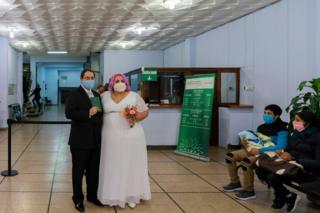 Image copyright Matilde Campodónico
Image copyright Matilde CampodónicoCovid Latam
Covid Latam is a collective project focused on how Covid-19 has affected the countries of Colombia, Brazil, Peru, Bolivia, Ecuador, Argentina, Chile, Uruguay, Venezuela, Guatemala, Costa Rica, Cuba and Mexico.
The collective of 18 photographers aimed to show the similarities and differences of the impact in specific areas, depending on the conditions, views and response of each country.

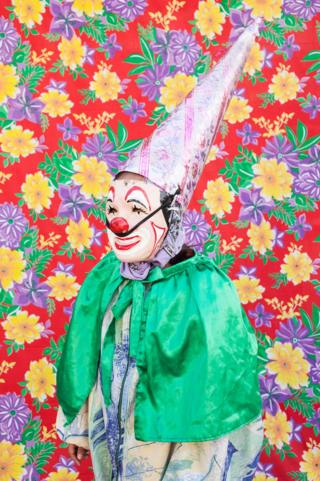 Image copyright Lujan Agusti
Image copyright Lujan AgustiLuján Agusti
“Gang of Clowns analyses the constitutive elements of this tradition through formal portraits.
“This project tries to visually explore the idea of Syncretism and how this works as a political tool, exercising power over communities that cannot break free.
“The clearest example of this is the Virgin of Guadalupe, the dark-skinned virgin.
“Colourful, surreal and vivid imagery that faces us with oppression, social decadence, and actions that go back to the beginning of the construction of America as we know it today.”

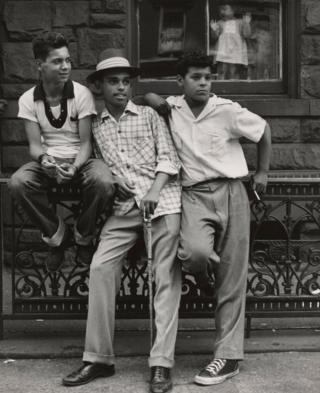 Image copyright Leo Goldstein Photography Collection LLC
Image copyright Leo Goldstein Photography Collection LLCLeo Goldstein (1901-1972)
Born in Kishinev in the former Bessarabian region of Russia (now Moldova), Goldstein settled in New York City in 1906.
Taking up photography when he joined the Photo League in the late 1940s, Goldstein’s social documentary images include his East Harlem body of work, which now provides a window into historic socio-economic and political landscapes of New York City.

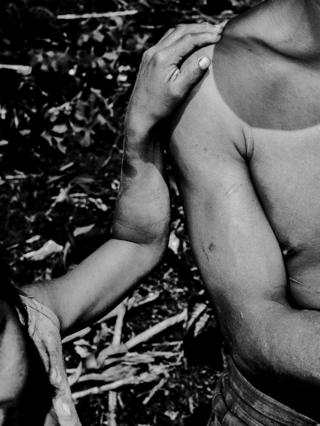 Image copyright Jorge Panchoaga
Image copyright Jorge PanchoagaJorge Panchoaga
“I travelled through Cauca, walking the heart of my Nasa indigenous family’s community, finding various ways to name the world, to understand the present, the past and the future.
“Behind the Mountain portrays the daily life of this region in constant conflict, seeking to understand the deep and intimate connection that communities have with their territory and the need to exercise their unique culture and autonomy.
“This image is part of my monographic work Detrás de la Montaña (Behind the Mountain), which delves into the indigenous life of Cauca in contemporary Colombia, in a personal journey through the roots of my indigenous Nasa family.”
The Bronx Documentary Center’s third Annual Latin American Foto Festival takes place in New York, from 23 July to 2 August 2020.
Click Here to Visit Orignal Source of Article https://www.bbc.co.uk/news/in-pictures-53420847


